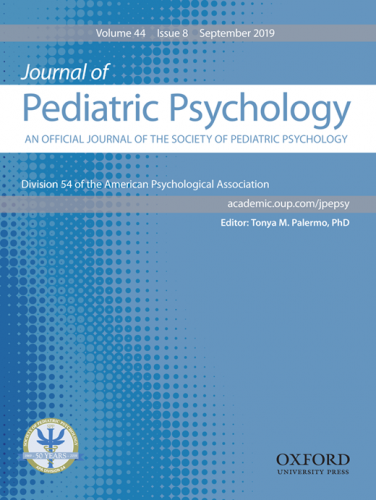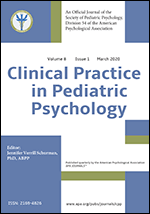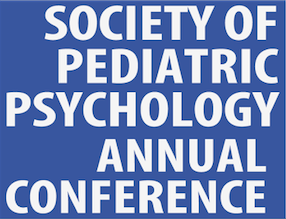Fact Sheet: Procedural Pain in Children and Adolescents
Procedural pain refers to the pain that children experience during medical procedures such as immunizations and other injections, venipunctures, circumcision, bone narrow aspirations, and lumbar punctures. Biological (e.g., sex), psychosocial (e.g., anxiety, parent behaviors) and procedural (e.g., invasiveness of procedure, environmental setting) factors have been implicated in children’s experience of procedural pain.
Prevalence and Course
Children undergo numerous medical procedures as part of medical care throughout childhood. In particular, needles are ubiquitous throughout the lifespan as they are used to prevent, diagnose, treat, and monitor a variety of conditions and diseases; for example, 8 to 12 billion vaccinations are given worldwide every year. Children in hospital undergo approximately 4 procedures per day and their pain is often undertreated. The pain from a needle may be considered brief but its consequences can last far longer than the actual procedure as described below.
Health and Psychosocial Consequences
Short-term consequences of inadequately managed pain and fear related to needle procedures include increased procedural time, use of restraint, increased pain and fear, dizziness and fainting, and potential for injury. Longer-term consequences may include negative memories leading to increased pain and fear at future procedures, need for additional analgesics to achieve the same effect, as well as delaying or avoiding procedures (e.g., vaccine hesitancy).
Evidence-based Assessment
Pain is a personal, subjective experience, thus, self-report is considered an integral part of pain assessment when possible. The Faces Pain Scale-Revised is recommended for measuring acute procedural pain in children between the ages of 4 or 5 and 12 years, and a 0-10 Numerical Rating Scale is additionally recommended for children and adolescents age 8 years and older. Parent and health professional proxy report and observational scales are also often used, particularly when cognitive impairment or sedation limit child self-report.
Negative needle experiences appear to be a risk factor for the development of high levels of needle fear which may generalize to fears and avoidance of medical procedures more broadly; it is very important to distinguish high levels of needle fear from low to moderate fear. Indeed, individuals with high levels of needle fear require a different type of intervention before they can fully benefit from pain management strategies. Screening for levels of needle fear prior to the procedure can therefore guide appropriate treatment and improve children’s procedural experiences: children with low to moderate levels of fear can benefit from typical pain and distress management strategies whereas those with high levels of fear will need exposure-based treatment. As yet, there is no gold standard assessment approach; children can be asked to self-report their levels of fear (≥ 5 year old children with the Children’s Fear Scale; ≥ 7 with a 0-10 Numerical Rating Scale). Self-reports can be combined with information from parents about the child’s level of distress during previous procedures and attempts to avoid or escape these situations.
Evidence-based Interventions
Recommended pain management strategies vary with child age. In particular, infants under 2 years benefit from use of breastfeeding, sucrose, distraction, and age-appropriate positioning (i.e., skin to skin for newborns, or holding upright). For older children, breathing exercises, distraction strategies, hypnosis, and combined cognitive-behavioral interventions are efficacious for reducing pain and/or distress during needle-related procedures. Caregivers should avoid repetitive reassuring (“You’re okay”) or apologizing to children during procedures, as these strategies are ineffective and may actually exacerbate child distress. Pharmacological (e.g., topical local anesthetic creams) and physical strategies (e.g., injecting the most painful vaccine last in the case of multiple immunizations) are also very important pain intervention strategies for acute procedural pain.
Culture, Diversity, Demographic and Developmental Factors
Numerous demographic factors are related to children’s procedural pain responses. Younger children display more distress in response to procedural pain, and report greater pain intensity than older children. Developmental factors (e.g., cognitive development) are important in children’s ability to understand, report, and cope with procedural pain. Research on interethnic differences in children’s procedural pain is limited, but suggests that differences between individuals are greater than differences between ethnic groups; however, work outside of procedural pain suggests problematic racial disparities in terms of pain management.
Resources
- Help Eliminate Pain in Kids and Adults website: http://phm.utoronto.ca/helpinkids/index.html Under “Publications”, this website contains links to important open access resources including: 7 systematic reviews (2015) and two large clinical practice guidelines for vaccine related pain and fear. There are also several videos under “Resources”.
- #ItDoesn’tHavetoHurt Proven Pain Control for Children: https://itdoesnthavetohurt.ca/ See “Resources” section.
- CARD System for school-based vaccinations: https://www.aboutkidshealth.ca/CARD
- Faces Pain Scale Revised: https://www.iasp-pain.org/Education/Content.aspx?ItemNumber=1519
- Children’s Fear Scale: https://www.uoguelph.ca/pphc/childrens-fear-scale
Author List: 2019 update by C. Meghan McMurtry. The previous version was written by: Boerner, K.E., Noel, M., Birnie, K.A., McMurtry, C.M., & Chambers, C.T. (2012).
Date of Last Update: October, 2019
References
- Birnie, K.A., Chambers, C.T., Fernandez, C.V., Forgerson, P.A., Latimer, M.A., McGrath, P.J., Cummings, E.A., & Finley, G.A. (2014). Hospitalized children continue to report undertreated and preventable pain. Pain Research & Management, 19(4), 198-204.
- Birnie, K.A., Noel, M., Chambers, C.T., Uman, L.S., & Parker, J.A. (2018). Psychological interventions for needle-related procedural pain and distress in children and adolescents. Cochrane Database of Systematic Reviews, October 2018.
- Castarlenas, E., Jensen, M.P., von Baeyer, C.L., & Miro, J. (2017). Psychometric properties of the Numerical Rating Scale to assess self-reported pain intensity in children and adolescents: A systematic review. Clinical Journal of Pain, 33(4), 376-383.
- Groenewald, C.B., Rabbitts, J.A., Hansen, E.E., & Palermo, T.M. (2018). Racial differences in opioid prescribing for children in the United States. Pain, 159(10), 2050-2057.
- McMurtry, C.M., Pillai Riddell, R., Taddio, A., Racine, N., Asmundson, G.J.G., Noel, M., Chambers, C.T., Shah, V. & the HELPinKids&Adults Team (2015). Far from “just a poke”: common painful needle procedures and the development of needle fear. Clinical Journal of Pain, 31(10S), 3-11.
- McMurtry, C.M., Taddio A., Noel M., Antony M.M., Chambers C.T., Asmundson G.J.G., …. Scott J. (2016). Exposure-based interventions for the management of individuals with high levels of needle fear across the lifespan: A clinical practice guideline and call for further research. Cognitive Behaviour Therapy, 45(3), 217-235.
- Stevens, B.J., Abbott, L.K., Yamada, J., Harrison, D., Stinson, J., Taddio, A.,… Finley, G.A. (2011). Epidemiology and management of painful procedures in hospitalized children across Canada. Canadian Medical Association Journal, 183(7), E403-E410.
- Stinson, J. N., Kavanagh, T., Yamada, J., Gill, N., & Stevens, B. (2006). Systematic review of the psychometric properties, interpretability and feasibility of self-report pain intensity measures for use in clinical trials in children and adolescents. Pain, 125, 143-157.
- Taddio, A., McMurtry, C.M., Shah, V., Pillai Riddell, R., Chambers, C.T., Noel M., & the HELPinKids&Adults Team (2015). Reducing pain during vaccine injections: Clinical practice guideline (summary). Canadian Medical Association Journal, 187(13), 975-982.
- von Baeyer, C.L., Jaaniste, T., Vo, H.L.T., Brunsdon, G., Lao, H-C., & Champion, G.D. (2017). Systematic review of self-report measures of pain intensity in 3- and 4-year old children: Bridging a period of rapid cognitive development. Journal of Pain, 18(9), 1017-1026.



